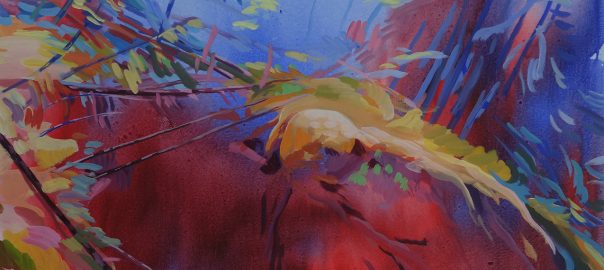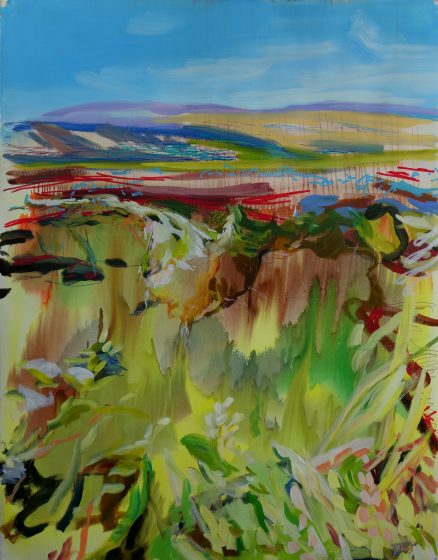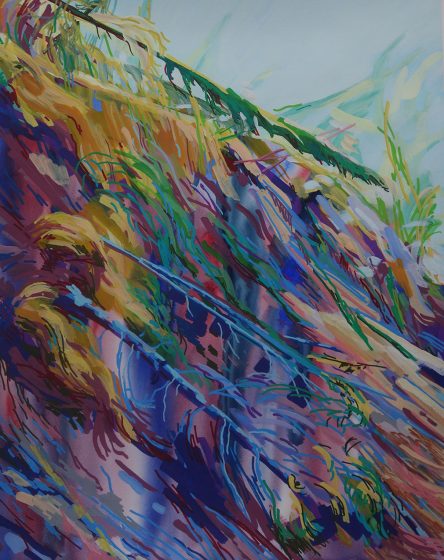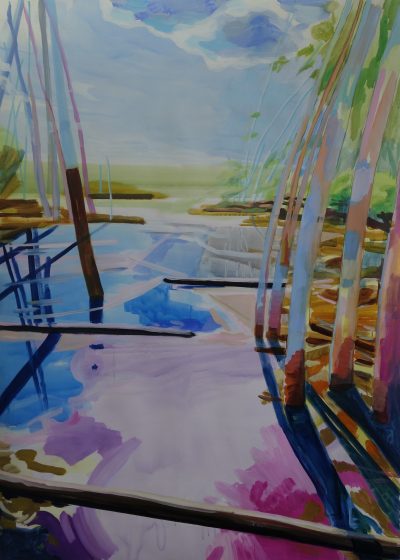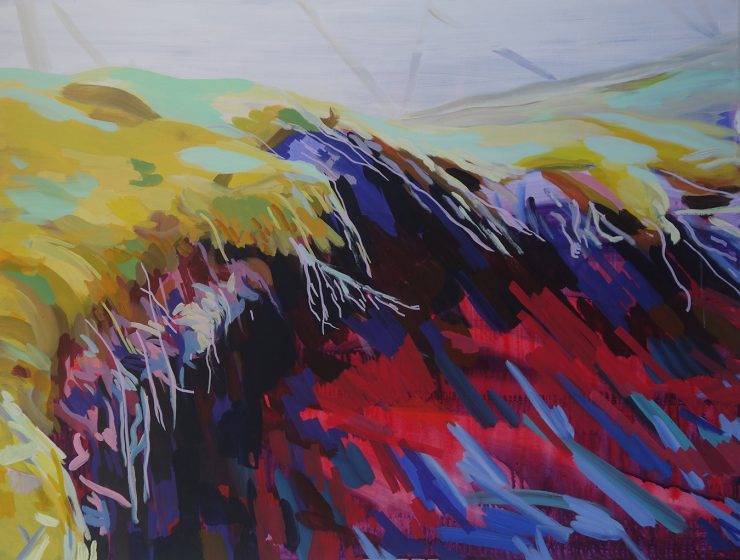Nikki Lindt explores sounds in unexpected places: rumbling in the soil of subways passing; snowflakes crashing to earth; sap flowing. These sounds lead us to perceive and appreciate trees and their environments in new ways, and experience sounds from parts of the environment that don’t typically reach our ears, but which are part of a tree’s essential world.
This is the Gallery Space’s “front door” and we are asking for a voluntary donation to support this exhibit—a tip jar, or pay-what-you-will ticket.
During COVID-19, The Urban Ecological Arts Forum at The Nature of Cities is bringing to life virtual exhibition spaces, highlighting current exhibitions on urban ecological themes that would otherwise be impossible to experience due to the closure of cultural facilities. Your ticket purchase ensures that the artist—and that this online forum—can continue to bring ecological arts to the public. Please donate what you can. 75% of your donation goes to the artist. You can see the show for free too; scroll down. But please consider a donation.
Donate to the artistIntroduction
We think trees are silent, inert even, but we know that they are not. They grow toward and away from stimuli; they communicate via chemicals; they “witness” events, often well beyond the time scales of human lives. Nikki explores sounds in unexpected places: the sounds rumbling in the soil of subways passing and snowflakes crashing to earth; the sound of sap flowing inside tree trunks. These sounds lead us to perceive and appreciate trees and their environments in new ways. We can hear them in new ways and experience sounds from parts of the environment that don’t typically reach our ears, but which are part of a tree’s essential world. These unexpected sounds are evocative and unexpected. They ask us to think differently. As scientists and practitioners, we regularly ask ourselves what nature is telling us. In Nikki’s project, she asks us to contemplate: if the trees speak to us, how will we reply? If we could ask a tree something, expecting a reply, what would we ask?

This Exhibit is a collaboration between the the USDA Forest Service International Programs, the Urban Field Station Collaborative Arts Program, and The Nature of Cities.
Nikki Lindt, born in the Netherlands, is a New York City-based artist working primarily in the mediums of painting, video and (underground) sound. She often works in collaborations, among others with scientists, philosophers and sociologists to examine climate change at the intersection of art, science and culture. MFA from Yale and her BFA from Gerrit Rietveld Academie in Amsterdam.
Nikki Lindt: Listening to Interiors
In 2018, I spent time in the Arctic Circle documenting permafrost thaw. I met with scientists from the Permafrost Lab in Fairbanks, Alaska, who taught me how to read the land to understand what was happening underneath. The landscape is affected in many ways by permafrost thaw. Destabilisation due to thawing of the soil deep underground causes areas of the landscape to collapse. The results of this process can look like enormous sinkholes in the Arctic landscape, which are called Thermokarst Failures. As I explored, sketched and documented these areas, with all my senses keenly aware, I was taken by the strange sounds I heard emerging from these huge gaping holes in the earth.
Since then I have gradually listened-in to and recorded underground in forests closer and closer to home, from the Arctic, to the forests of New Hampshire, to upstate New York all the way to the urban forests and wooded ‘natural areas’ of New York City. Many of the sounds I record are deeply resonant, musical, and can often carry a lot of drama. They travel surprisingly far and often weave through each other, connecting like an endless tapestry of underground sound.
Please wear headphones when listening.
Under a stream bed I hear shifting sand as well as the melodic otherworldly sounds of water carried through the sediment. From within the soil, the dry autumn leaves make a deep rumble as they hit the forest floor. Even a snowflake landing affects its surroundings with a particular thud.
Trees are unusually resonant and carry and transmit sounds through their whole being. This is audible at quite a distance in the soil around them. Inside of trees, I hear sounds of moving liquids, cracking and clanking, a mysterious hum, the wind, rattling branches, and a stream nearby. Within the tree and in the soil of the forest floor my own footsteps resonate like an approaching elephant, hardly audible above ground.
watercolor and acrylic, 2018-2021
In New York City I hear the thundering roar of the subway violently appear inside a tree, earthquake-like, though the subway tunnel is very far below the roots of the tree. I can’t help but wonder; How is the tree experiencing this?
This exploration of the hidden world of sound has created a space for me where I feel excitement and wonder. Listening has also fostered in me an even deeper bond and respect for trees, plants and other natural entities, reminding me that we are all inextricably interconnected and interdependent at this crucial moment in time.
The drive to better understand how we are affecting our landscapes brought me all the way to the Arctic Circle but ultimately I may have learned the most by radically slowing down and listening to the mysterious underground of the vast and varied urban forests and natural areas of NYC.
Please wear headphones when listening.
Reflections
In Nikki’s project, she asks an interdisciplinary and international panel of contributors to contemplate the questions:
If the trees speak to us, how will we reply?
If we could ask a tree something, expecting a reply, what would we ask?
Below are some reflections and meditations on these questions, and how scientists and practitioners respond to Nikki’s work.
Roll over the images below to see the short reflections on the idea of communicating with trees. The “cover art” of the panels are Nikki’s drawings, or her recording equipment.
If you could ask a tree a question, confident of a response, what would you ask?
We ask several dozen people the question above.
Roll over the images to reveal the questions.
Exhibition Credits
This exhibition was organized by NYC Urban Field Station, and adapted as virtual exhibition by the Forum for Radical Imagination on Environmental Cultures (FRIEC) at The Nature of Cities.
VIRTUAL ADAPTATION
Forum for Radical Imagination on Environmental Cultures
at The Nature of Cities
—
production for this exhibition:
David Maddox, TNOC director
Karen Tsugawa, web developer
Joe Klementovich, photography
Liza Paqueo, USDA Forest Service International Programs
support:
Patrick M. Lydon, arts editor
credit for tree graphics:
rawpixel | macrovector
TNOC exhibit series curators:
Patrick M. Lydon, Daejeon
Carmen Bouyer, Paris


